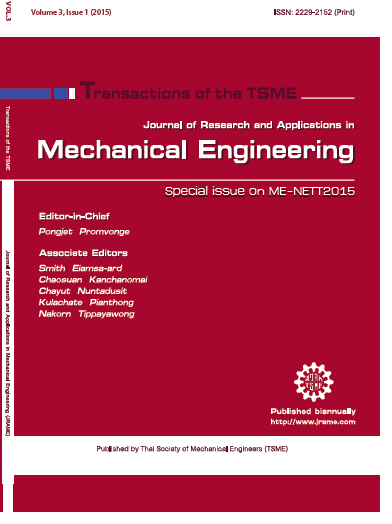Numerical simulation of bulk materials of energy dissipation in dustiness testers using DEM
Main Article Content
Abstract
Dust generation occurs in many bulk material handling processes, including; during free fall, transport hubs of handling of bulk materials, granular material loading or unloading and impact on conveyor transfers or other materials. Dust can pose an air pollution problem in; communities, the environment, industry equipment and be hazardous to health. Dustiness testers are one method that can be used to measure the amount of dust generation. It is known that the energy will need to remove the mass of material from the surface at the particle impact condition, particle velocity, particle collision and particle size distribution. However, it is often difficult to calculate the amount of energy absorbed on the surface. This paper investigates the energy dissipation phenomenon of two materials, iron ore and coal with size range 2.0-6.3 mm diameter. The discrete element modelling (DEM) simulation of the material movement in the European Standard dustiness tester and the Australian Standard dustiness tester have been used to analyse the collision energy and frequency, energy dissipation of bulk materials flow. Therefore, the DEM method was developed to simulate the energy dissipated of bulk materials during impact in the dustiness testers with these techniques and details of the modelling are presented in this paper.
Article Details
This work is licensed under a Creative Commons Attribution-NonCommercial-ShareAlike 4.0 International License.



